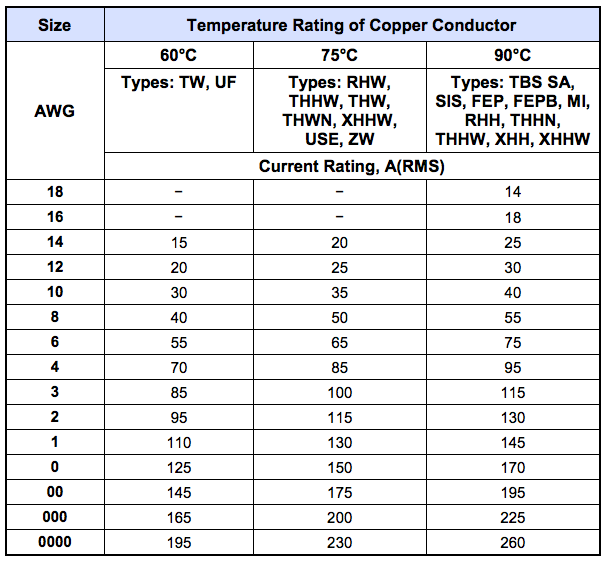What Size Copper For 100 Amp: A Comprehensive Guide For Your Electrical Needs
When it comes to electrical installations, understanding the right size of copper wire for a 100-amp service is crucial for safety and efficiency. Choosing the wrong size can lead to overheating, voltage drops, or even electrical fires. This guide will provide you with all the information you need to determine the appropriate copper wire size for a 100-amp service, ensuring your electrical system operates safely and effectively.
Electricity plays a vital role in our daily lives, powering our homes, businesses, and essential appliances. However, without proper planning and understanding of electrical systems, potential hazards can arise. That's why selecting the correct copper wire size is a critical step in any electrical project.
This article will delve into the details of what size copper wire is suitable for a 100-amp service, including factors to consider, relevant codes and regulations, and practical tips for installation. By the end of this guide, you'll have the knowledge and confidence to make informed decisions about your electrical wiring needs.
Read also:Jasmine Rice Costco The Ultimate Guide To Buying Highquality Rice In Bulk
Understanding Electrical Wire Sizes and Ampacity
Before diving into the specifics of what size copper wire is needed for a 100-amp service, it's essential to understand the basics of electrical wire sizing and ampacity. Wire size is measured in American Wire Gauge (AWG), with lower gauge numbers indicating thicker wires. Ampacity refers to the maximum current a wire can safely carry without overheating.
Factors Affecting Wire Size Selection
Several factors influence the selection of the appropriate wire size for a given ampacity:
- Amp Load: The total electrical load that the wire will carry.
- Distance: The length of the wire run affects voltage drop, which can impact performance.
- Temperature: Ambient temperature and the wire's ability to dissipate heat.
- Material: Copper is preferred due to its superior conductivity compared to other materials.
Understanding these factors is crucial for ensuring that the chosen wire size can handle the electrical load without compromising safety.
What Size Copper Wire for 100 Amp Service?
The standard recommendation for a 100-amp service is to use 2/0 AWG copper wire. This size is sufficient to handle the electrical load while maintaining safe operating temperatures. However, it's important to note that the exact size may vary depending on the specific conditions of the installation.
Why Choose Copper Over Other Materials?
Copper is widely regarded as the best material for electrical wiring due to its excellent conductivity, durability, and resistance to corrosion. Here are some reasons why copper is preferred:
- High conductivity ensures efficient power transmission.
- Excellent thermal properties prevent overheating.
- Long-lasting and resistant to environmental factors.
While other materials like aluminum are sometimes used, copper remains the industry standard for most residential and commercial applications.
Read also:What Is Princes Birth Name A Comprehensive Exploration Of The Iconic Artists Origins
NEC Code Requirements for 100 Amp Wiring
The National Electrical Code (NEC) provides guidelines and standards for electrical installations to ensure safety and compliance. According to NEC standards, the recommended wire size for a 100-amp service is 2/0 AWG copper wire. These regulations are updated regularly, so it's important to consult the latest edition of the NEC for the most current requirements.
Key NEC Standards to Consider
- Wire insulation type and temperature rating.
- Minimum wire size for specific ampacities.
- Proper grounding and bonding practices.
Adhering to NEC standards not only ensures compliance with legal requirements but also promotes safe and reliable electrical installations.
Calculating Voltage Drop for 100 Amp Copper Wire
Voltage drop is a critical consideration when determining the appropriate wire size for a 100-amp service. Excessive voltage drop can lead to inefficient operation of electrical devices and potential safety hazards. To calculate voltage drop, you'll need to consider the following factors:
- Wire length.
- Load current.
- Wire resistance.
Using a voltage drop calculator or consulting industry tables can help you determine the acceptable voltage drop for your specific application. For most residential applications, a voltage drop of 3% or less is recommended.
Common Mistakes to Avoid When Choosing Wire Size
Making the wrong choice in wire size can have serious consequences, including overheating, voltage drops, and even electrical fires. Here are some common mistakes to avoid:
- Underestimating the electrical load.
- Ignoring wire length and voltage drop considerations.
- Using substandard materials or improper installation techniques.
By carefully evaluating your specific needs and consulting with a licensed electrician, you can avoid these pitfalls and ensure a safe and efficient electrical system.
Installation Tips for 100 Amp Copper Wiring
Proper installation is just as important as selecting the right wire size. Here are some tips to ensure a successful installation:
- Hire a licensed electrician with experience in high-amp installations.
- Follow all local codes and regulations during installation.
- Use high-quality materials and properly insulated wires.
Proper planning and execution will help prevent future issues and ensure the longevity of your electrical system.
Cost Considerations for Copper Wiring
Copper wiring can be more expensive than alternatives like aluminum, but its superior performance and reliability often justify the cost. When budgeting for a 100-amp service, consider the following factors:
- Cost of materials, including wire, connectors, and other components.
- Labor costs for professional installation.
- Potential savings from efficient energy usage and reduced maintenance needs.
While the upfront cost may be higher, the long-term benefits of using copper wiring can outweigh the initial investment.
Alternatives to Copper Wire for 100 Amp Service
In some cases, alternatives to copper wire may be considered for cost savings or other reasons. Aluminum wire, for example, is lighter and less expensive than copper but requires larger wire sizes to achieve the same ampacity. Here are some considerations when evaluating alternatives:
- Conductivity and efficiency.
- Corrosion resistance and durability.
- Compatibility with existing systems and components.
While alternatives may be suitable for certain applications, copper remains the preferred choice for most residential and commercial installations.
Environmental Impact of Copper Wiring
Copper is a sustainable material that can be recycled without losing its properties. Using copper wiring not only ensures high performance but also contributes to environmental sustainability. Here are some environmental benefits of copper:
- High recyclability rate.
- Long lifespan and minimal waste.
- Efficient energy transmission reduces overall energy consumption.
By choosing copper wiring, you can support environmentally friendly practices while maintaining the quality and reliability of your electrical system.
Final Thoughts: Ensuring Safe and Efficient Electrical Installations
In conclusion, selecting the correct size copper wire for a 100-amp service is essential for ensuring the safety and efficiency of your electrical system. By understanding the factors that influence wire size selection, adhering to NEC standards, and considering voltage drop and other considerations, you can make informed decisions about your wiring needs.
We encourage you to share this article with others who may benefit from the information and leave your thoughts or questions in the comments section below. For more in-depth guides and resources on electrical installations, explore our other articles on the site.
Table of Contents
- Understanding Electrical Wire Sizes and Ampacity
- What Size Copper Wire for 100 Amp Service?
- NEC Code Requirements for 100 Amp Wiring
- Calculating Voltage Drop for 100 Amp Copper Wire
- Common Mistakes to Avoid When Choosing Wire Size
- Installation Tips for 100 Amp Copper Wiring
- Cost Considerations for Copper Wiring
- Alternatives to Copper Wire for 100 Amp Service
- Environmental Impact of Copper Wiring
- Final Thoughts: Ensuring Safe and Efficient Electrical Installations
For additional resources and information, consult reputable sources such as the National Electrical Code (NEC) and professional electricians in your area. Remember, safety should always be your top priority when working with electrical systems.


